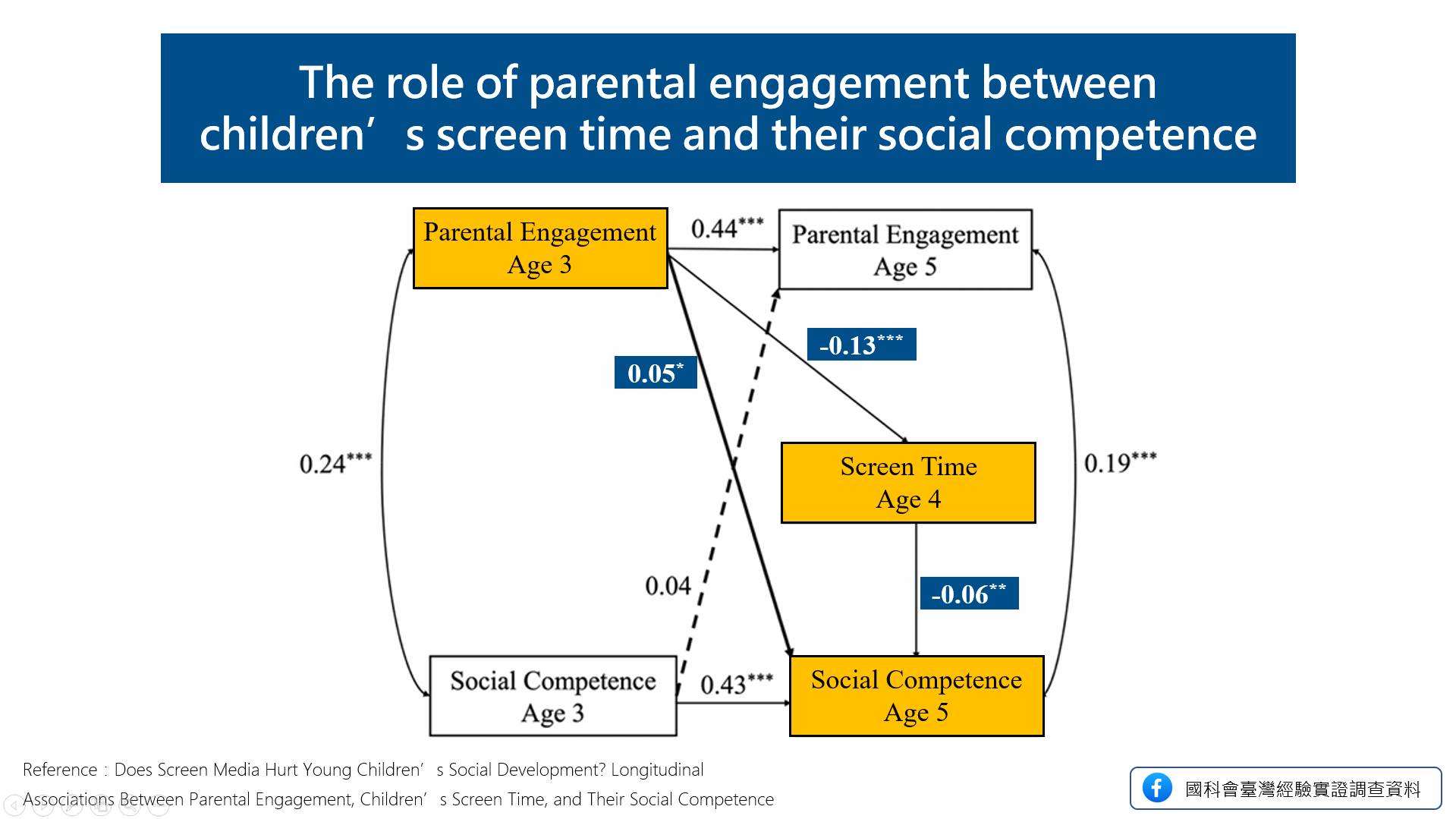Exploring the Mediating Effect of Young Children’s Screen Time on the Relationship Between Parents’ Active Parenting and Children’s Future Social Competence
Born after the millennial generation, digital natives have become accustomed to using electronic devices as the primary medium for daily activities such as learning, socializing, and entertainment. These technological tools not only help us efficiently handle everyday tasks but are also expected to play a role in parenting.
As the proportion of dual-income families in society increases, many parents struggle to find breathing space between work and family responsibilities. Consequently, they may “invite” electronic devices to act as babysitters 👶, accompanying children as they develop social skills. However, according to Hayne et al. (2003), children who learn through imitation from television perform far less effectively than those who learn in person.
In response, Ma Shao-Tsung and colleagues (2022) used data from the Taiwan Birth Cohort Study (KIT), specifically the first to third waves of the 36-month-old group, to explore the mediating effect of children’s screen time on the relationship between parental engagement and children’s future social competence. Their findings confirmed that the more effort parents invest in child-rearing, the less time children spend on electronic devices, thereby reducing the negative impact of screen use on their future social competence.

Parent–child interaction is crucial for children’s development of social competence (Brownell et al., 2013). Conversations related to emotions can help children understand feelings 🫂. During interactions, parents can also respond immediately to their children’s behavior and let them clearly know which social behaviors are encouraged or discouraged. Therefore, when using digital learning materials, they should not be regarded merely as a substitute for parents, but rather as a supporting tool for parent–child interaction.
📁 Does technology only have negative effects on young children? Click the KIT database link 🔗 in the comments to explore more about the relationship between young children and digital devices.

